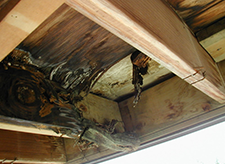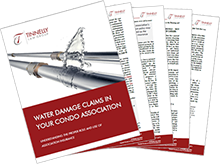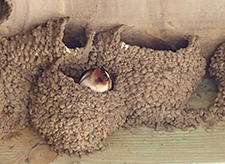 Our industry depends on a close network of skilled industry professionals who are dependable and responsive. Emergencies are common, particularly in condominium developments where breaks in shared or common water lines can lead to disaster. Quick action by association vendors can extinguish the root cause of the emergency and potentially reduce, if not eliminate, thousands of dollars of damage. Ideally, the vendor’s scope of work should be limited to those actions only; however, vendors occasionally wade into dangerous waters when they (albeit innocently) strike up conversations with residents about damage responsibility. Do the following real-life examples sound familiar to you?
Our industry depends on a close network of skilled industry professionals who are dependable and responsive. Emergencies are common, particularly in condominium developments where breaks in shared or common water lines can lead to disaster. Quick action by association vendors can extinguish the root cause of the emergency and potentially reduce, if not eliminate, thousands of dollars of damage. Ideally, the vendor’s scope of work should be limited to those actions only; however, vendors occasionally wade into dangerous waters when they (albeit innocently) strike up conversations with residents about damage responsibility. Do the following real-life examples sound familiar to you?
A plumbing invoice states:
“Service call. Performed leak detection. Source of leak found to be Owner responsibility. Water line is leaking and needs to be replaced.”
A resident says the following to the association’s community manager, “Your roofer told me that the ceiling leak is the HOA’s responsibility. Why shouldn’t I believe him? Wasn’t he hired by the HOA?”
Community managers and board members routinely rely upon trained vendors to provide competent services in one of two (2) contexts: preventative maintenance and reactionary repairs. As to the latter, reactionary repairs, which are usually of an emergent nature, may involve vendor entry into a separate interest and the presence of a concerned resident. In that circumstance, residents have been known to question the vendor regarding loss responsibility. Cornered, the vendor might feel obligated to provide an answer. Vendor communication in that regard is rarely beneficial to the association – especially in those infrequent situations where the resident seeks to manipulate the dialogue to develop a potential legal claim.
When working at a residence, vendors should try to limit resident dialogue except as necessary to perform the work that they were hired to perform. Why? Vendor opinions regarding fault or responsibility may not be correct. Responsibility likely depends upon a review of the association’s governing documents, among other things. Most vendors are not trained to analyze the responsibility allocations set forth in the association’s declaration; indeed, a responsibility allocation in one context may not necessarily be the same in another situation because governing documents usually differ. Second, vendor statements can create public relations challenges for management and board members when they try to explain to an upset resident why the vendor’s in-field statements are not accurate. Most significantly, vendor representations could potentially bind the association under a legal theory called ostensible agency.
Ostensible agency occurs when the principal (i.e. the HOA) intentionally, or by want of ordinary care, causes a third person (i.e. the resident) to believe another (i.e. the vendor) to be his agent who is not really employed by him (Civil Code Section 2300). Under California law, a resident can argue that the vendor is an [ostensible] agent of the association by proving that the association carelessly created (by want of ordinary care) the impression that the vendor was an agent or employee of the association; and that the resident was harmed because he or she reasonably relied on his or belief (California Civil Jury Instruction 3709).
How do management professionals and board members avoid the possibility of binding statements by an unassuming vendor? Exercising ordinary care by vendor education at the outset of the vendor relationship. If possible, vendor agreements should include contract language which prohibits vendor communication (orally and in writing) with residents regarding responsibility after a loss. Before repair work begins, vendor employees should be told that their role is limited to stopping the problem and, if warranted, developing a repair plan. They should be reminded that they have been hired by the association, and as such, are obligated to report their factual findings only to the association; vendor invoices should not include responsibility or fault determinations. Perhaps most importantly, vendors should be forewarned about the possibility of resident confrontation – and instructed to politely tell residents that their responsibility inquiries should be directed to management or the board for review.
 |
Existing vendor and association relationships can be strengthened by a mutual understanding of the vendor’s expectations when interfacing with a resident. It is critical that vendors and HOA leaders stay aligned so that potentially inaccurate in-field responsibility determinations do not become the basis of a future legal action involving the association. |
-Blog post authored by TLG Attorney, Kumar S. Raja, Esq.
 Asked – Our HOA community manager always recommends that our vendor contracts be reviewed by our HOA attorneys before we sign them. Is this really necessary?
Asked – Our HOA community manager always recommends that our vendor contracts be reviewed by our HOA attorneys before we sign them. Is this really necessary? HOA Lawyer Blog
HOA Lawyer Blog


 *New Case Law
*New Case Law *New Legislation
*New Legislation Our industry depends on a close network of skilled industry professionals who are dependable and responsive. Emergencies are common, particularly in condominium developments where breaks in shared or common water lines can lead to disaster. Quick action by association vendors can extinguish the root cause of the emergency and potentially reduce, if not eliminate, thousands of dollars of damage. Ideally, the vendor’s scope of work should be limited to those actions only; however, vendors occasionally wade into dangerous waters when they (albeit innocently) strike up conversations with residents about damage responsibility. Do the following real-life examples sound familiar to you?
Our industry depends on a close network of skilled industry professionals who are dependable and responsive. Emergencies are common, particularly in condominium developments where breaks in shared or common water lines can lead to disaster. Quick action by association vendors can extinguish the root cause of the emergency and potentially reduce, if not eliminate, thousands of dollars of damage. Ideally, the vendor’s scope of work should be limited to those actions only; however, vendors occasionally wade into dangerous waters when they (albeit innocently) strike up conversations with residents about damage responsibility. Do the following real-life examples sound familiar to you? In the recent case of
In the recent case of  *New Library Article!
*New Library Article!
 The Governor has signed
The Governor has signed 
 *Asked & Answered
*Asked & Answered